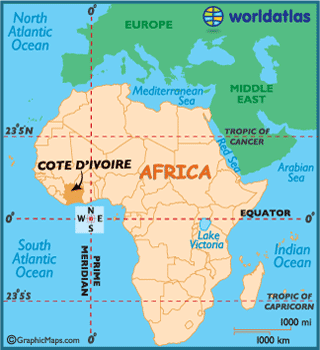Infrastructure contributed 1.8 percentage points to Cote d'Ivoire's annual per capita GDP growth over the mid-2000s before conflict began to erase the country's infrastructure and its growth contributions. Raising the country's infrastructure endowment to the level of the region's middle-income countries could boost the growth rate by a further 2 percentage points.
Private sector contracts signed in the 1990s resulted in improved operational performance and funding for investments in the water, power, transport, and ICT sectors. Impressively, those contracts survived the crisis and delivered uninterrupted service. But private investment flows have decreased since the mid-2000s. Cote d'Ivoire's most pressing infrastructural challenge will be to regain the financial equilibrium needed to restore a reliable energy supply. Reestablishing the prominence of Abidjan's port will require investments in terminal capacity and road and rail infrastructure upgrades on hinterland linkages. The underfunding of road maintenance and poor sanitation are additional challenges.
Cote d'Ivoire's annual infrastructure spending was $750 million in the mid-2000s, with going to power sector operations and maintenance. If the underpricing of power and other inefficiencies (valued at $200 million annually) were eliminated, the country’s annual infrastructure funding gap would amount to $1 billion, and infrastructure goals could be reached within 20 years. Cote d'Ivoire's has relatively good prospects for bridging its funding gap by raising public investment from its low current level, choosing more efficient technologies, and harnessing additional private investment for infrastructure.
Author: Foster, Vivien; Pushak,Nataliya;Document Date: 2011/03/01.Document Type: Policy Research Working Paper.Report Number: WPS5594.Volume No: 1 of 1. Disclosure Date: 2011/03/01
<><>
Text Version*
<><>

No comments:
Post a Comment
prueba